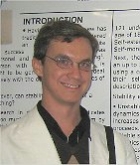The Ghost in the System: Where Free Will Lurks in Human Minds
Dynamics of Freedom in Mental and Social Systems
How, then, are we to understand the conflict between the scientific assumption of causation and the equally strong (and socially adaptive) assumption of free will in everyday life? To some extent, the belief in free will reflects people’s lack of insight into their psychological processes (e.g., Mandler, 1975; Nisbett & Wilson, 1977) and their corresponding reliance on information processing strategies to determine the source of their own and others’ behavior (e.g., Bem, 1967; Wegner, 2002). People ascribe personal agency to themselves and others when the genuine sources of behavior are too subtle or temporally distant to be given much credence or noticed in the first place. In the criminal justice system, for instance, factors such as extreme stress and obvious mental impairment are recognized as mitigating factors and are often taken into account when assigning personal responsibility for wrong-doing. That excludes a wide range of less obvious social factors and invisible biological processes that may be equally relevant in promoting socially undesirable patterns of thought and behavior.
But people go beyond using free will as a default explanation for behavior with subtle causes. Even when external forces are salient, an individual is held personally responsible if he or she knew what he or she was doing and made a conscious choice to act in that fashion (cf. Baumeister, 2008; Harvey, 1976). We suggest that a more fundamental explanation of the attribution of free will can be derived from the perspective of dynamical systems theory. In recent years, this approach to understanding phenomena in the physical sciences has been adapted to identify basic operating rules that are manifest in diverse aspects of human experience, from self-concept to social change (cf. Vallacher & Nowak, 2007).
In generic terms, a dynamical system is simply a set of interconnected elements that influence one another over time. In social systems, the elements correspond to individuals; in mental systems, the elements correspond to thoughts, feelings, and memories. In each case, the influence among elements promotes the emergence of higher-order units that provide coherence for the constituent elements. In a social system, the mutual influence among interacting individuals promotes the emergence of higher-order norms and beliefs, which then coordinate and constrain the activities of the individuals comprising the group or society. In a mental system, the specific cognitive elements that succeed each other in the stream of consciousness influence each other to achieve a common higher-order meaning. These higher-order meanings emerge from the self-organization of the different cognitive elements, creating attitudes, social judgments, and values from a collection of individual thoughts, experiences, and behaviors. Once a higher-order state has emerged via self-organization, it tends to resist change. Dynamically, the state functions as an “attractor,” in that the elements are, over time, “attracted to” the coherent meaning provided by the higher-order state.


